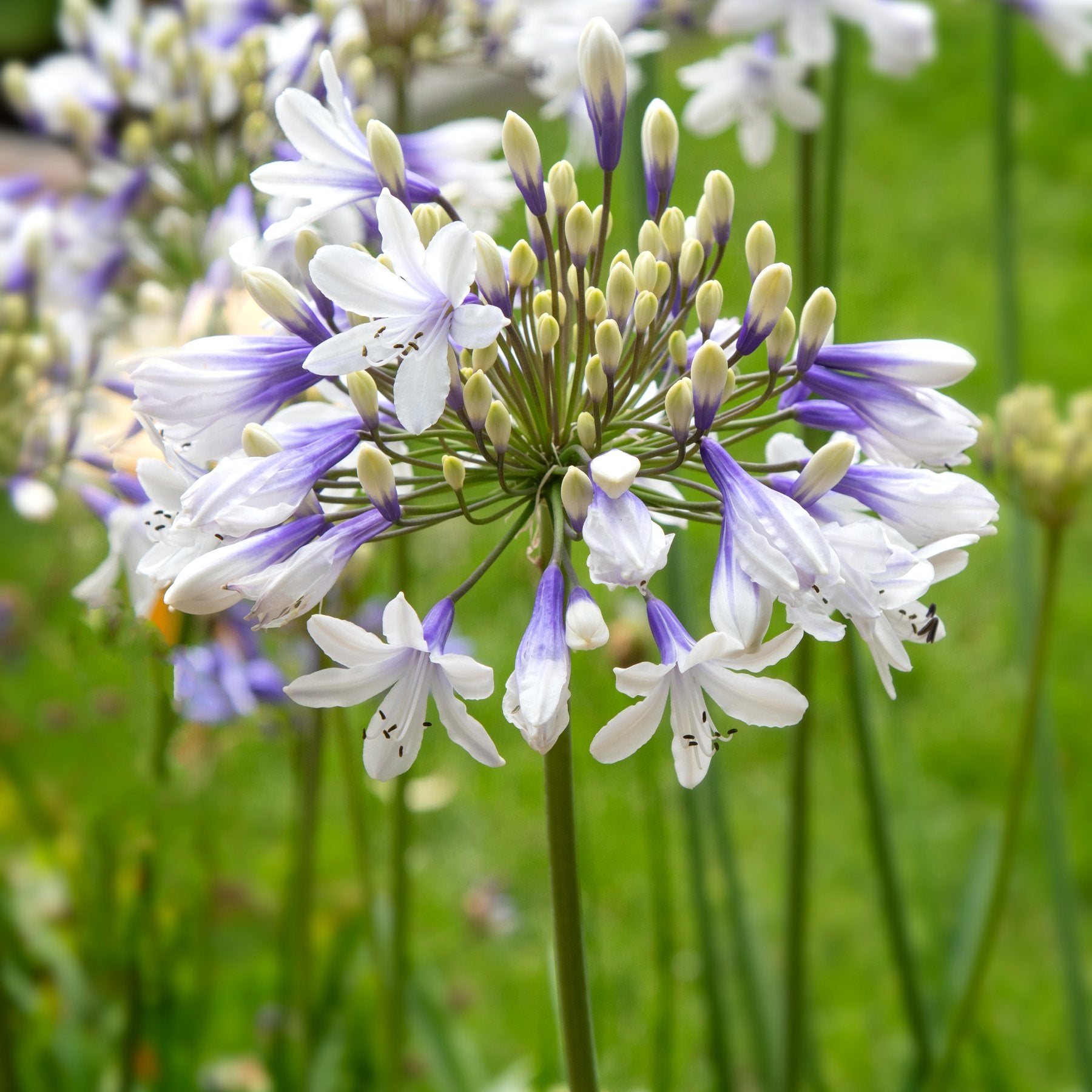Expanding Agapanthus: A Full Overview to Beautiful Blooms
Expanding Agapanthus: A Full Overview to Beautiful Blooms
Blog Article
Mastering the Art of Agapanthus Treatment: Vital Steps for Healthy And Balanced Growth and Lively Blooms
In the realm of horticulture, the farming of agapanthus stands as a satisfying undertaking for those that seek to nurture these sophisticated flowering plants. From choosing the right variety to understanding trimming techniques, the journey in the direction of cultivating growing agapanthus plants is diverse and holds the vital to opening the complete possibility of these herb treasures.

Selecting the Right Agapanthus Variety

When selecting the best Agapanthus selection for your garden, take into consideration aspects such as climate viability, bloom shade, and development routine. Agapanthus, generally known as Lily of the Nile or African lily, can be found in a range of colors varying from shades of purple and blue to white. Choose a bloom color that complements your existing yard combination to create a harmonious landscape. Furthermore, think about the climate in your region to make certain the Agapanthus selection you choose can flourish in your certain problems. Some selections are much more tolerant of cold temperatures, while others choose warmer environments. Comprehending the growth habit of different Agapanthus ranges is essential for correct positioning within your garden. Some varieties have a clumping development behavior, ideal for containers or boundaries, while others have an even more spreading nature, ideal for ground cover or mass growings. By thoroughly examining these elements, you can pick the excellent Agapanthus range to improve the appeal of your garden.
Ideal Growing Problems
Considering the optimal environmental requirements is vital for effective Agapanthus cultivation. Agapanthus thrives in well-draining soil with a somewhat acidic to neutral pH level. When planting, select an area that receives full sunlight to partial shade. In hotter climates, offering some mid-day color can stop scorching of the leaves. Agapanthus plants are sensitive to cold temperature levels and should be protected from frost throughout wintertime months.
To guarantee healthy development and lively flowers, plant Agapanthus bulbs at a depth of regarding 2-4 inches and space them 8-12 inches apart. Including raw material, such as compost, to the soil can boost drain and fertility, promoting robust origin advancement. Mulching around the base of the plants helps retain moisture and reduces weed growth. Regular watering is crucial, specifically during the growing season, to keep the dirt continually moist yet not saturated.
Watering and Fertilizing Tips
Preserving proper wetness degrees and providing necessary nutrients are crucial aspects in the treatment routine for Agapanthus plants. When it comes to sprinkling Agapanthus, it is vital to strike an equilibrium. These plants like constantly damp dirt but are prone see post to root rot if overwatered.
Fertilizing Agapanthus is vital for promoting healthy and balanced development and respected blooms. Use a balanced fertilizer, such as a 10-10-10 formula, in the early springtime as new development arises. By following these watering and fertilizing ideas, you can ensure your Agapanthus plants grow and create vivid, resilient blossoms.
Trimming Techniques for Agapanthus
Pruning Agapanthus plants at the suitable times and with proper techniques is important for keeping their health and wellness and promoting optimal development and blooming. The optimal time to trim Agapanthus remains in late winter season or early spring prior to brand-new growth emerges. Begin by eliminating any dead or yellowing leaves near the base of the plant. Cut them as short as feasible without harming the emerging shoots.
Deadheading invested flowers can additionally redirect the plant's power right into generating more blossoms rather than establishing seeds. If you desire to collect seeds for breeding, leave some blossoms to completely dry and fully grown on the plant.
Keep in mind to make use of tidy, sharp devices to make precise cuts and minimize the threat of introducing illness. Agapanthus. Normal trimming will aid keep your Agapanthus looking healthy and balanced and neat while making certain a bountiful display of beautiful blooms
Managing Usual Insects and Conditions
After ensuring proper trimming techniques for Agapanthus, it is important to attend to common pests and visit the site conditions that can influence the health and vigor of these plants. One common insect that impacts Agapanthus is the Agapanthus gall midge.
In addition, Agapanthus plants can endure from origin rot if they are grown in inadequately draining pipes soil. By being watchful and taking timely activity versus illness and parasites, you can aid your Agapanthus plants flourish and create dynamic blooms. Agapanthus.

Verdict
In conclusion, mastering the art of agapanthus care includes selecting the ideal selection, offering optimal planting conditions, proper watering and fertilizing, proper pruning methods, and dealing with usual insects and diseases. By complying with these necessary steps, you can guarantee healthy and balanced development and lively flowers for your agapanthus plants. Remember to click this link routinely keep an eye on and keep your plants to advertise their total health and durability.
To guarantee healthy and balanced development and vivid flowers, plant Agapanthus bulbs at a depth of about 2-4 inches and area them 8-12 inches apart. By complying with these watering and feeding pointers, you can guarantee your Agapanthus plants flourish and create lively, long-lasting flowers.
One common insect that influences Agapanthus is the Agapanthus gall midget. Additionally, Agapanthus plants can experience from origin rot if they are planted in poorly draining soil. By complying with these crucial actions, you can make certain healthy and balanced development and vibrant blossoms for your agapanthus plants.
Report this page